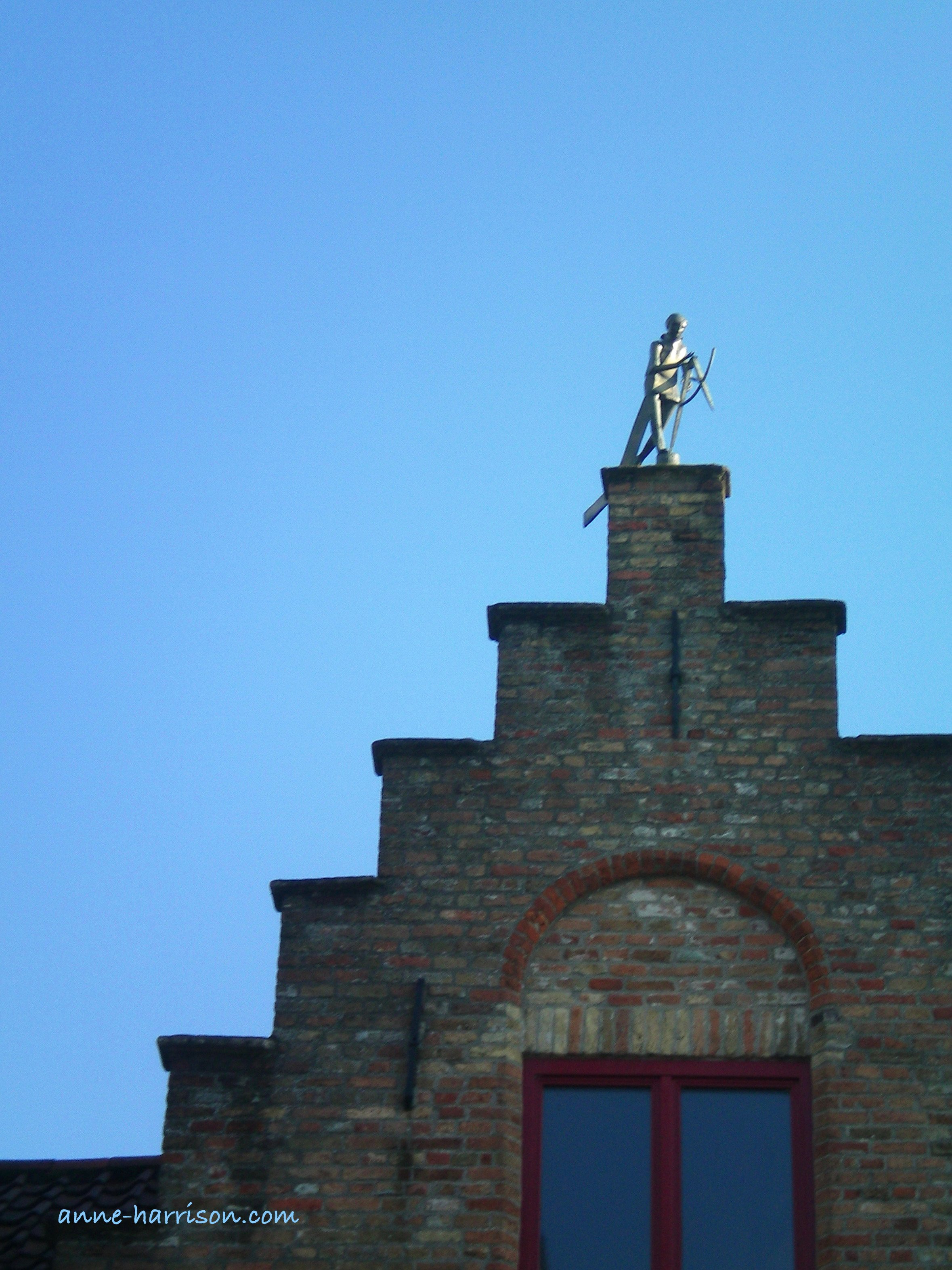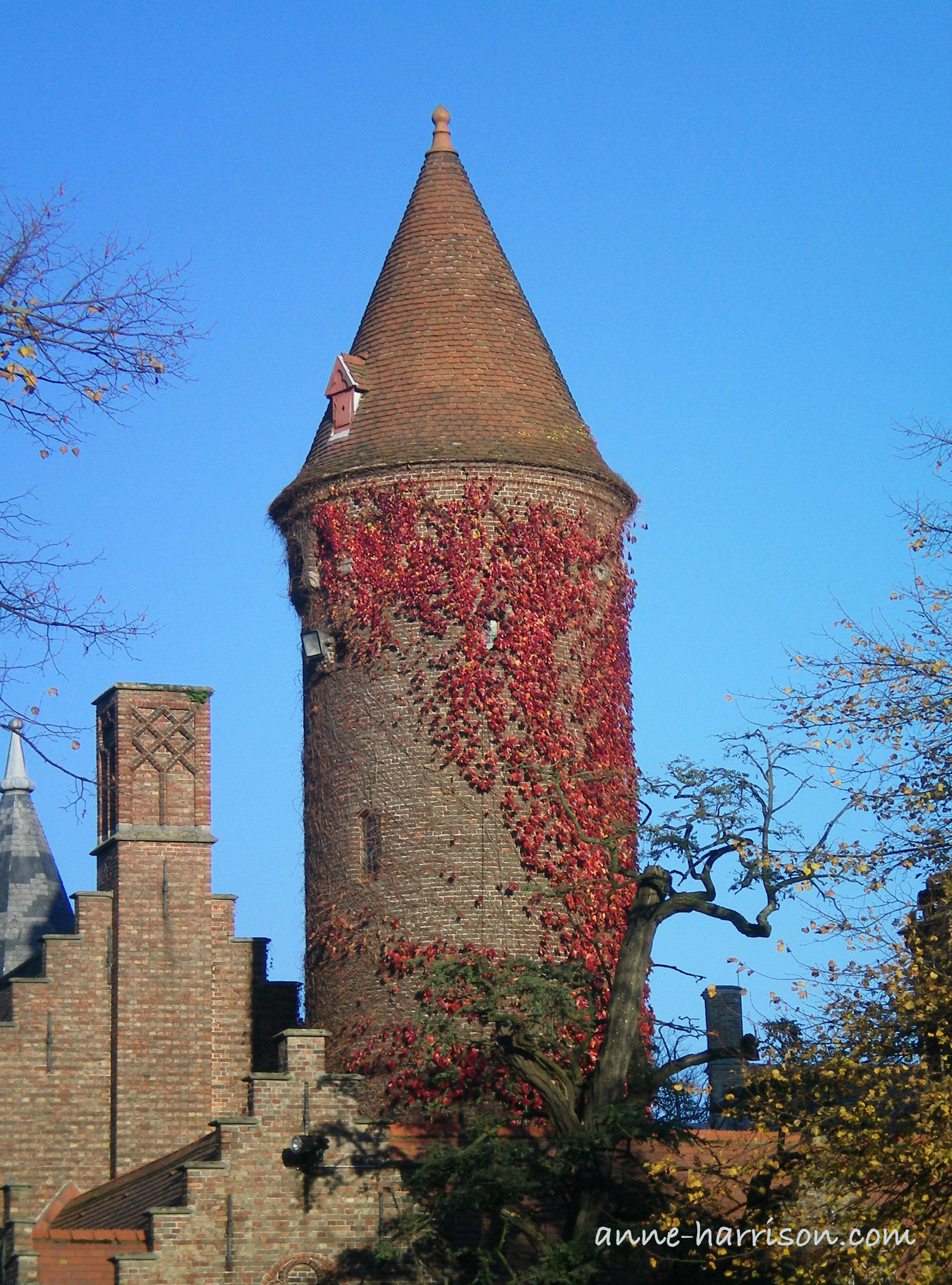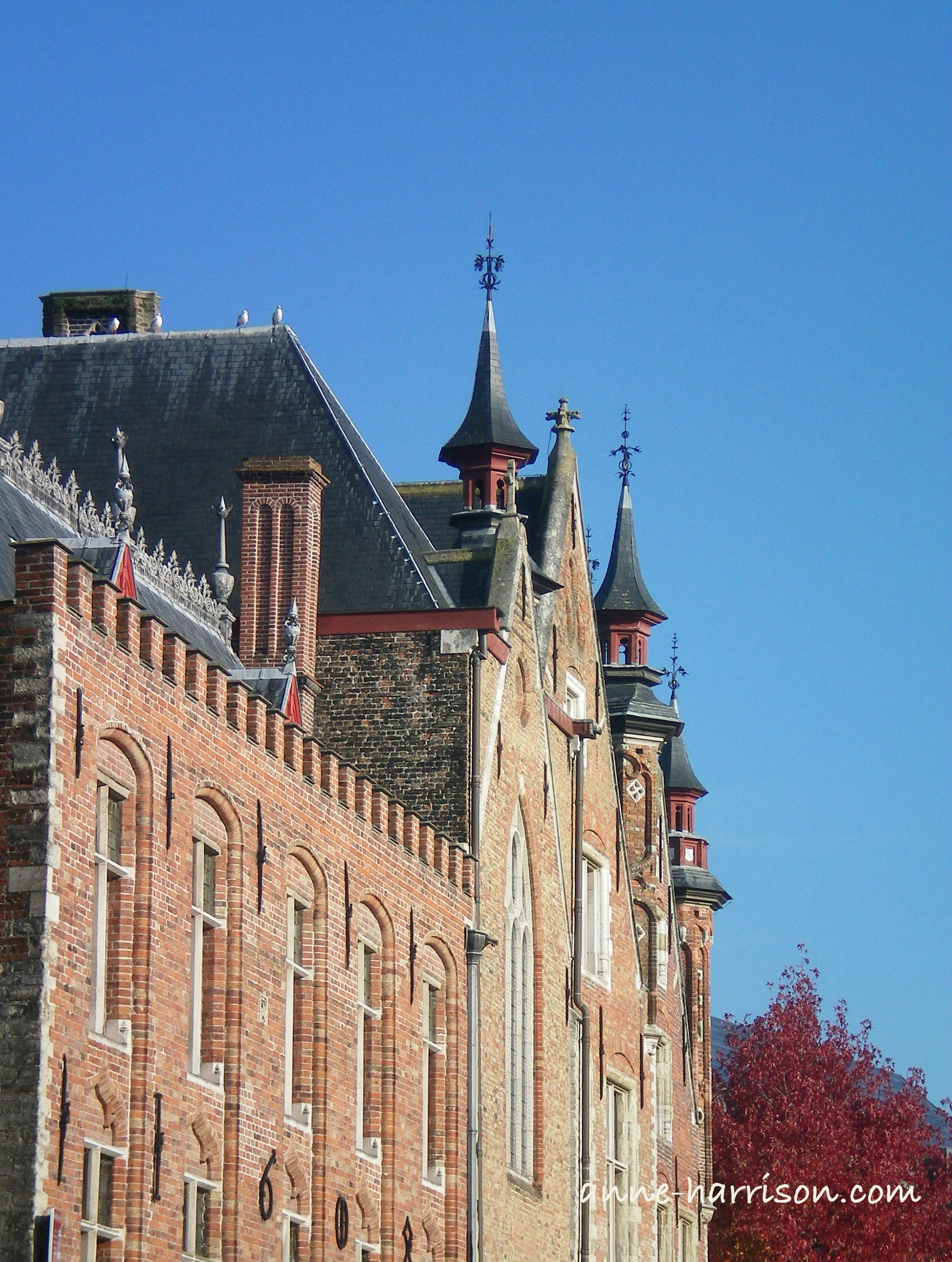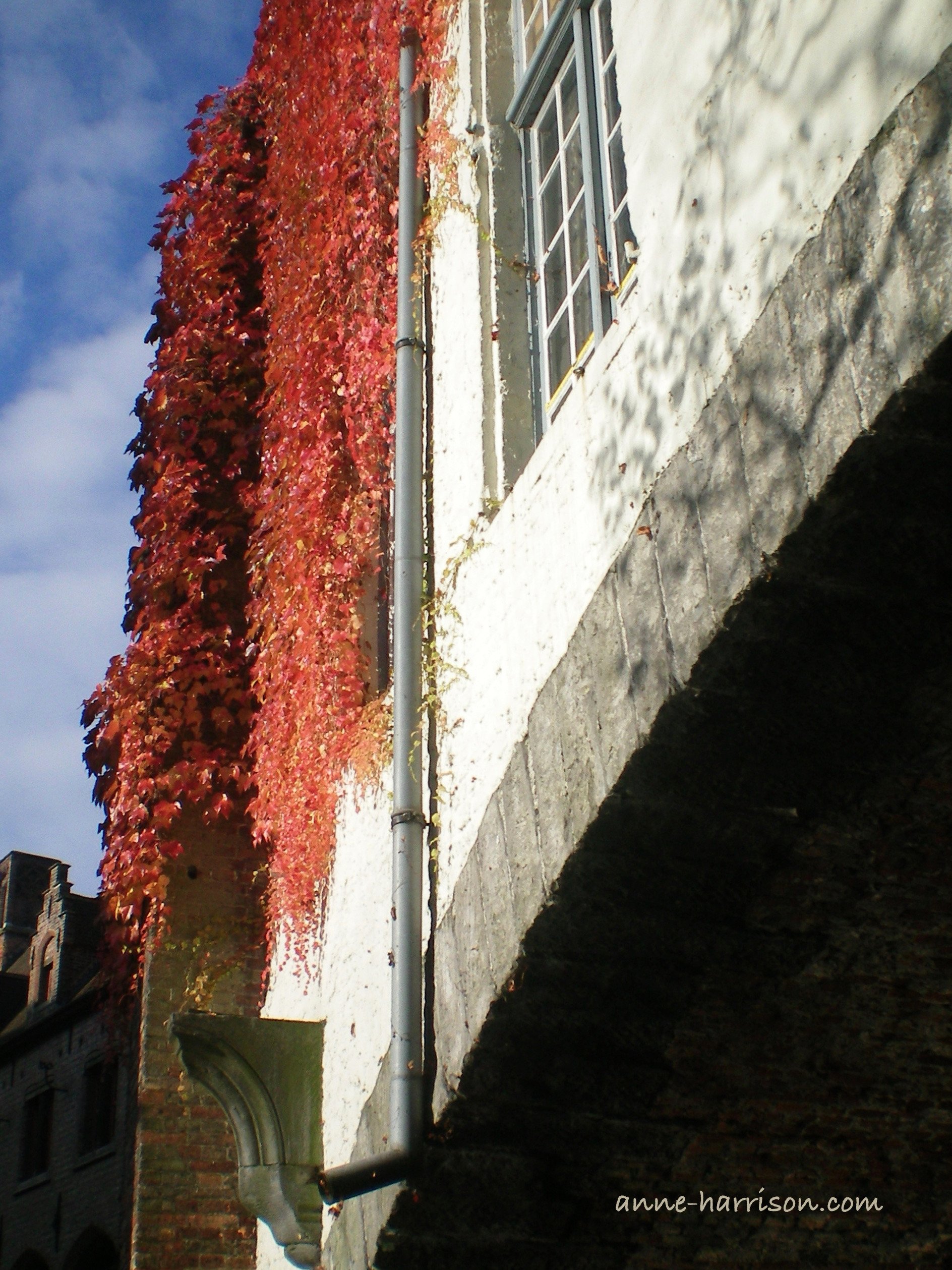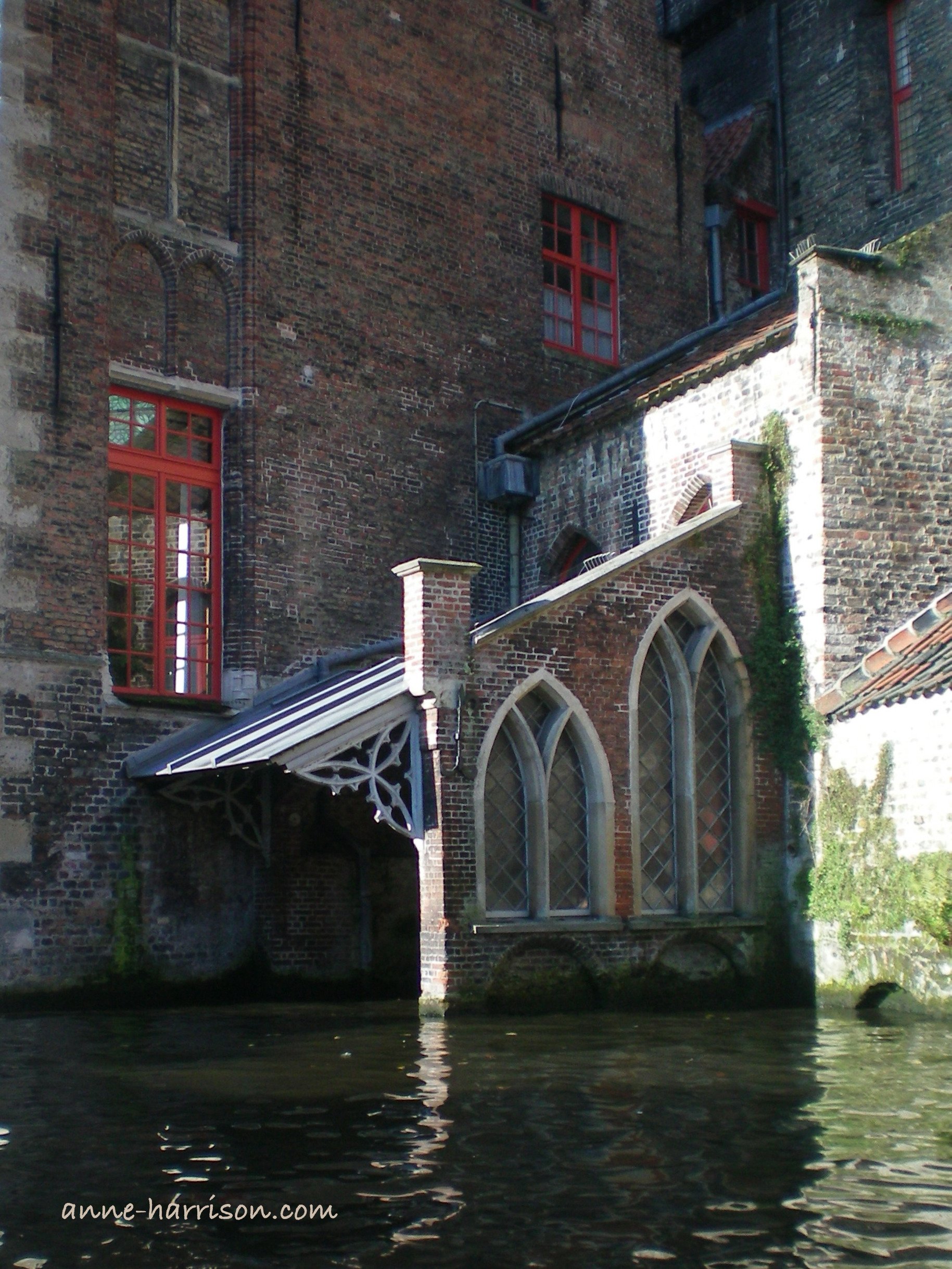Sint-Janshospitaal: A Medieval Hospital in Bruges
“We were highly delighted by our visit to the Hospital of St. John’s. It is a Gothic edifice of ancient structure. The sick lie in a large apartment, which is supported by Norman arches and pillars. The Sisters of Charity attend upon the invalids; and everything appears in that state of order and excessive neatness.”
Charles A. Stothar, English antiquarian, in a letter to his mother 20th Sept 1890
Every day the barges cruising along the canals of Bruges pass Sint-Janshospitaal. The wall running along the The Groenerei (or Green Canal) is classically Flemish in style: ivy-covered stones, a roofline stepping against the sky, with tall gothic windows overlooking the water. In a time when spiritual healing was considered more important than healing of the flesh, the wing overlooking the water once doubled as both a chapel and a ward. The wash from the barge lapped against the weathered stones and landing stage, where a hospital door opened onto the water.
Dating from the 12th C, Sint-Janshospitaal is Europe’s oldest preserved hospital, remaining in use until 1978. Now it serves as a museum housing medieval medical instruments, hospital artefacts and furniture. Even the medieval apothecary and herb garden remain, although, unfortunately, the bakery and brewery have long vanished.
The earliest document relating to the hospital is dated 1188, and deals with the vows taken by the lay brothers and sisters who worked here. The sisters were in charge of the daily organisation of the sick and of the kitchen, while the brothers managed the hospital’s administration. It was not until 1236 that the lay brothers and sisters donned religious habits, and took vows of obedience, chastity and poverty.
Hans Memling at Bruges! Have you never seen that dear old hospital of St. Jean on passing the gate of which you enter the fifteenth century?”
“Roundabout Papers” Thackeray (1811–1863)
Sint-Janshospitaal also boasts six masterpieces by the famous Vlaamse Primitieven (Flemish Primitive) Hans Memling (1430–1493). The wealth of Bruges attracted leading artists from all over Europe, from which arose the innovative style of the Primitives.
Four of Memling’s works were painted specifically for the hospital, including his famous St. Ursula Shrine. (He was treated by the Hospitalliers of Sint-Janshospitaal after being wounded at the Battle of Nancy in 1477, and later lived for a while the hospital.) Completed in 1480, the shrine is considered by many the masterpiece of the artist’s later years. It is a carved wooden reliquary cased in gold, and shaped like a miniature Gothic church. Within lie St. Ursula’s relics. Three painted tondos on each side depict the beautiful St Ursula and her accompanying 11,000 virgins, massacred by the Huns as they returned from a pilgrimage to Rome. The delicate figures with their detailed costumes, the intricate architecture and fantastical landscapes all reflect Memling’s skill and innovation.
The hospital stood just within the city walls, allowing it to provide care not only for sick townsfolk, but also for pilgrims and travellers who often sought shelter and food here. For over 700 years it served not only as a hospital, but also as a charitable institution, caring for the needy as well as the ill, and giving spiritual guidance to the suffering and the dying. Today, Sint-Janshospitaal remains one of the most beautiful medieval buildings in Bruges, if not Europe. The atmosphere of a medieval hospital remains, a place both utilitarian and aesthetically beautiful, designed to cure the body and the heart, the mind and the soul.
Like my photos? - if you feel like contributing to my coffers, please click either here or on the link in my header to buy (or simply browse) my photos. Or else, please click here to buy either my poetry or novel ebooks. I even have a YouTube channel. Thank you!


